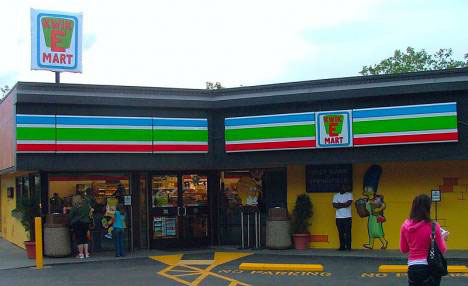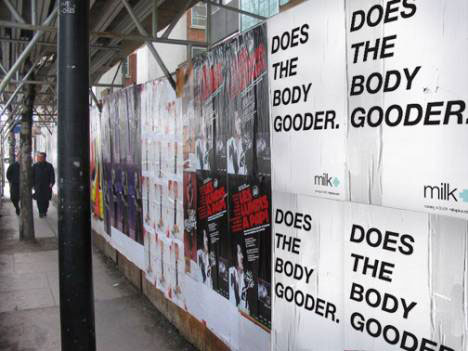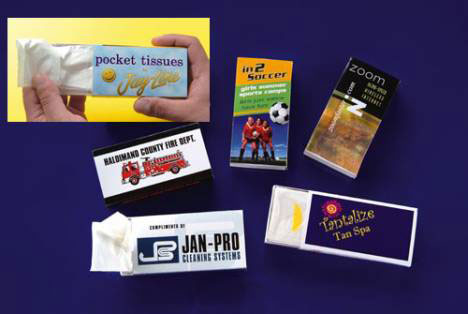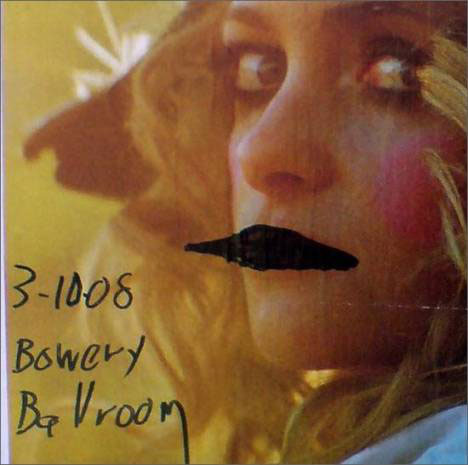19.10.09
13.10.09
Aparecer en Google, check list básica
Comenzando a posicionar. Acciones básicas para empezar a posicionar tu web.
Un amigo me pidió que le hiciese un resumen de como posicionar con poco tiempo y ya que lo hago pues os lo pongo aquí por si os sirve.
Ya tengo Web, ¿por qué no sale en Google?
Este artículo va dirigido a quien acaba de lanzar una web y ha oido campanas de eso del posicionamiento web y no sabe por donde empezar. He intentado reducir las acciones a las más simples y que menos tiempo consumen para no profesionales.
En primer lugar asegúrate de que tu web utiliza las palabras clave con las que te buscaría un potencial cliente y que estas aparecen en los títulos (etiqueta title) de tu web además de mencionarlas en otros sitios. Si quieres leer más sobre como redactarlos este artículo de Javier Gosende es muy interesante.
Empecemos por crearte una cuenta Google si no tienes ya una. Y activar en ella los servicios de Google Analytics (Aquí hay que instalar el código de seguimiento) y las herramientas para Webmasters(aquí tienes que verificar tu web). Ambos servicios te darán unos códigos para incluir en tu web, si te apañas con la gestión de la web podrás hacerlo y sino pídeselo a tu webmaster. Una vez instalados y verificados los dejamos haciendo y vamos a mirar otras cosillas.
¿tu web es rápida o lenta? miralo en http://tools.pingdom.com/ más de 5 segundos en cargar puede denotar un problema.
Consigue unos cuantos enlaces fáciles. Narcis Vila creó un Script basado en una idea de PabloGeo que manda a un puñado de sitios la dirección de tu web que la analizan de forma automática y lo que es más importante añaden una página sobre ella. En esa página ponen enlace a tu web y aunque no sea lo mejor cuesta poco hacerlo (con firefox son 2 clicks). Si te sobra el tiempo échale un ojo a las páginas generadas pues algunas aportan información interesante.
Pasados unos días desde la publicación de la nueva web mira a ver si Google te ha indexado y cuantas páginas ha indexado introduciendo como búsqueda site:www.tudominio.com Esta consulta te dirá cuantas páginas tiene indexadas Google.
Si realmente han pasado unos cuantos días puedes mirar también en las herramientas para webmasters que opina Google de tu web (Sobretodo en Diagnosticos->Errores de rastreo hay que corregirlos y a ser posible también Aplicar las Sugerencias en HTML) en Analytics podrás ver cuanta gente ha pasado por tu web (seguramente tu y amigos) pero entrando en Fuentes de Tráfico->Palabras clave te informará que palabras han usado los usuarios que han accedido a tu web.
Hay cientos de mejoras y cosas a aplicar para seguir optimizando una web, esto solo pretende ser una comprobación básica de que los mínimos se cumplen y por donde empezar, si quieres ir más allá te recomiendo que te compres un libro de Seo, contrates un profesional SEO o empolles por Internet en todos los blogs que hay sobre el tema.
Social Media Marketing - Huh?
Check out this SlideShare Presentation:
Social Media Marketing - Huh?
View more presentations from Kevin McIntosh.
11.10.09
Un descuento que me da risa? -micropost -
Recientemente he leído un pequeño caso, en el que un empresario llamado Drew Roberts, ofrecía un pequeño descuento a aquellas personas que le hiceran reír durante los primeros 5 minutos. De esta manera consiguió una mayor interacción con sus clientes, además de un recuerdo imborrable en su memoria. Y por su parte logró una mayor satisfacción durante la realización de su trabajo. Simplemente genial, extremandamente sencillo y efectivo, no?Fuente: Guerrilla Marketing Over 90 field-tested tactics-by Jay Conrad Levinson
10 Different Types of Guerrilla Marketing
In our journey through the captivating world of guerrilla marketing, we’ve seen some interesting sights. The birth of the concept, its evolution, the big corporations that play the guerrilla game, the viral nature of some campaigns, and gmarketing for social causes have all caught our attention as we stroll along Advertising Street.
Coming up on your left is a peculiar little place. It’s a squat building with the windows blacked out. A security guard stands sentry over the single entrance and regards passers-by suspiciously. This, friends, is where new guerrilla marketing methods are cooked up and shipped out hot and fresh to you, the unwitting consumer. The details of what goes on in there are tightly guarded, but we’ve got a key.
One of the main advantages of guerrilla marketing is that it’s unexpected. It catches us off guard and causes an emotional response: laughter, shock or sadness are great sellers. It’s easy to see why marketers would rather you didn’t know just how they’re using guerrilla marketing to their advantage. If you know their secrets, you may just stop responding.
It probably doesn’t come as a surprise that marketers are a clever bunch. They are well versed in the principles of human psychology that make us want to buy what they’re selling. Anyone who has ever taken a marketing class will probably recognize the psychological principles used to sell us things: reciprocity, authority, consistency/commitment, social proof/acceptance, and scarcity/urgency. And in the methods we’ll explain below, you can find each and every one of those principles. In this installment of our guerrilla marketing series we will take a closer look at some unusually interesting types including ambient marketing, presence marketing, grassroots marketing, wild posting, undercover marketing and astroturfing.
We took a look at viral marketing back in part four of this series. This is a highly visible form of guerrilla marketing these days. A viral campaign can’t be planned or predicted, but it is dearly hoped for by marketers. A successful viral campaign uses existing communication networks (you tell two friends, they each tell two friends, and so on), doesn’t require much in terms of resources, and has the potential to be unstoppable. If you’re giving something away, even better. Remember Gmail invites? They were somewhat difficult to get at first, so everyone wanted one.
Ambient marketing allows a business to create brand recognition without necessarily pushing their products. One excellent example is the Dancing Grass Vans of London. Owned by renegade smoothie makers (and brilliant marketers) Innocent, the vans are covered in real, growing grass and can often be seen around the city making deliveries and drawing stares. Because they serve a real purpose (delivering smoothies), the vans don’t look like advertisements. But do you forget the name of a company with grass-covered vans? Never. Leading up to the release of the Simpsons Movie, 7-11 transformed some of their stores to look just like Kwik-E-Marts, complete with weird Springfield-type products. This ambient marketing campaign was ridiculously effective.
Presence marketing is along the same lines as ambient marketing. It’s about making the business name recognizable and familiar and always there. You know that saying, “out of sight, out of mind?” It goes double for products that don’t maintain a constant presence. This can be achieved through product placements in movies and TV shows, stalls at local festivals and markets, regular Twitter updates, or whatever else makes that product name visible daily. Small businesses and entrepreneurswith modest marketing budgets often find that presence marketing delivers an excellent return for their investment. All they really have to do is be visible.
Grassroots marketing is gaining popularity like – well, like a grass fire. A grassroots campaign can take on many forms, but for the most part it is about winning customers one-by-one rather than on a very large scale. Some grassroots campaigns have elements of presence marketing (like posting on message boards relevant to your business) or viral marketing (like the above user-generated Sony ad). A successful grassroots campaign is all about building relationships and emphasizing the personal connection, not about broadcasting your message and hoping potential customers are listening.
Wild postings may seem old-fashioned, but they are still wildly popular with indie bands and products that want to portray that indie image. Have you ever walked down a city street and seen a wall plastered with multiple copies of a poster for a movie, concert, or alcoholic beverage? Those would be wild postings, and part of their effectiveness lies in the way that they can make us believe we’re witnessing something momentous. Most of us would love to have a poster from the wild posting days of the Beatles, right? So you’d better grab that Smirnoff Ice poster now while you can, right?
Would you rather have your advertising handed to you? Tissue-pack advertising was made popular in Japan, but today it’s spreading to infiltrate the rest of the world. Knowing that advertising fliers were almost never accepted, much less read, Japanese businesses began to hand out pocket packs of tissues with ads on them. This simple but ingenious marketing method works because, well, who would turn down free stuff? Because the giveaway is a useful item, it stays close to the target consumer until it’s been used up. These days, you’d be hard pressed to find pocket packs of tissues in Japanese shops because they are so readily available for free.
Undercover marketing, also known as buzz marketing, is said to be one of the more devious ways of marketing to the masses. Remember the “buy me a drink” girls from part two of this series? These lovely young vixens were being paid to create a buzz around a certain beverage without ever letting you in on their dirty little secret: they were being paid to be so friendly. Undercover marketing/buzz marketing is all about selling something to someone who has no idea they’ve just witnessed a sales pitch.
Astroturfing is widely considered to be the slimiest of all guerrilla marketing practices. It involves creating an artificial buzz about a product or company, and it’s mighty risky in the information age. Postings are created in online forums, singing the praises of a certain product or service – but they aren’t made by the public. They’re made by shills, or people associated with the company who are paid to express a positive opinion. Astroturfing is rampant online in forums and blogs (actually “flogs,” or fake blogs), but you can still see the odd IRL astroturfer wandering department stores, lobbying Congress, and writing letters to newspaper editors.
Alternative marketing is referenced consistently by marketers, but it is by nature challenging to define. It may be best defined as publicity that looks like it is completely removed from the company itself. For example, when Paris Hilton’s Sidekick was hacked, sales of Sidekicks jumped overnight. While T-Mobile probably (maybe?) had nothing to do with that publicity, it was excellent marketing for them. In fact, it has been suggested more than once that the whole event was an orchestrated publicity stunt. Alternative marketing takes a good dealof imagination and a healthy dose of luck to pull off. If the public finds out that they’ve been duped, it will spell disaster for the campaign.
Experiential marketing is increasingly embraced by all types of companies and brands today. It’s becoming easier for us to tune out and ignore advertisements today, so experiential marketing aims to give you an experience rather than send you a one-way message. Experiential marketing lets you interact with the product and associate your immediate emotional responses with that brand. TheCharmin Pottypalooza bathrooms at state fairs and the semi-permanent ones (now gone) in New York City are an unprecedented example of effective experiential marketing.
How many of these methods have you seen just this week? With new concepts being rolled out all the time, it’s not always easy to spot when you’ve been targeted.(many thnx..weburbanist )
guerrilla vs viral
Guerrilla Marketing vs Viral Marketing -- http://itweetu.com/LBQVX/ -- many thanks @tangobusiness --
entonces..que hacer?
Hoy el consumidor promedio inconcientemente filtra y selecciona los mensajes publicitarios a los que desea estar expuesto. Consecuentemente, los mercadólogos se toparon con un problema y nuevo reto; la vieja fórmula no era tan efectiva.
Qué hacer? Buscar nuevas formas de llamar la atención. Los comerciales ahora tienen pegajosas canciones, son humorísticos, te cuentan una historia, los programas de TV ahora no se interrumpen sino que dentro del mismo programa está el anuncio usado por los personajes principales, el spam, el correo (real) basura, el marketing viral y algunas más, pero sin duda mi favorita, y de las que les platicaré el día de hoy es el marketing de guerrilla, o marketing ambiental.
Qué hacer? Buscar nuevas formas de llamar la atención. Los comerciales ahora tienen pegajosas canciones, son humorísticos, te cuentan una historia, los programas de TV ahora no se interrumpen sino que dentro del mismo programa está el anuncio usado por los personajes principales, el spam, el correo (real) basura, el marketing viral y algunas más, pero sin duda mi favorita, y de las que les platicaré el día de hoy es el marketing de guerrilla, o marketing ambiental.
Diferenciarse o Morir..he aqui la cuestion
El término Guerrilla Marketing fue acuñado en 1984 por Jay Conrad Levinson en un libro con el mismo nombre. En éste, Levinson da agresivos tips y armas para ser utilizados por pequeños negocios con recursos financieros limitados.
Suscribirse a:
Entradas (Atom)










